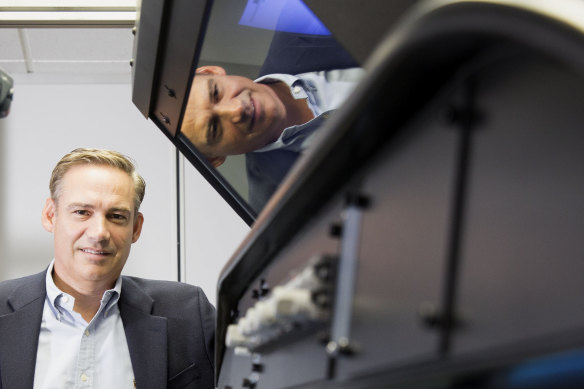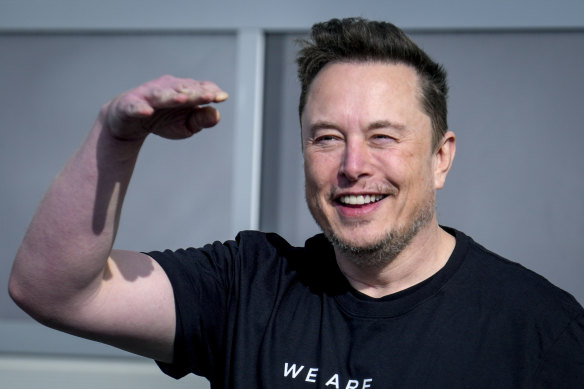
Asked whether Boeing would stay in the program after Starliner’s current mission, a Boeing spokeswoman declined to comment. She told Reuters the company was focusing on getting the spacecraft back safely.
Loading
Lori Garver, a former NASA deputy administrator who was a key architect of NASA’s Commercial Crew Program, said: “I am not sure the decision will ultimately be NASA’s. Boeing is going to have to foot much of this bill, as they have been.”
Ortberg, who started as CEO this month, is busy trying to convince Boeing workers, investors, airline customers and the flying public that safety issues are under control after a panel dramatically came off a 737 MAX jet in midair in January.
Analysts said Boeing would probably keep Starliner alive, partially because Boeing had experienced worse in other programs in its defence business. In the future, Starliner could serve customers other than NASA, such as private space stations meant to replace the ISS after 2030, but those efforts could change.
NASA sees Boeing as a crucial backup to Musk’s SpaceX, which is the only entity capable of putting humans in orbit other than US rivals Russia and China.
Boeing has spent more than half its $US4.5 billion NASA contract awarded in 2014 and Starliner has yet to be certified. The contract, which has swelled by $US300 million despite its fixed-price structure, includes six post-certification Starliner missions that will fall further behind schedule with each mishap.
SpaceX’s Crew Dragon was certified in 2020 and has flown 10 crewed missions for NASA since signing a contract initially worth $US2.6 billion. NASA has bought more Crew Dragon missions to make up for Boeing’s delays, boosting SpaceX’s contract to $US4.9 billion.
Boeing may have to re-do the astronaut mission to the ISS to get the space capsule certified by NASA. The company already had to repeat an uncrewed 2022 mission at a cost of nearly $US500 million.
“I wouldn’t rule anything out. We have options for how we move forward,” NASA space operations chief Ken Bowersox, a former astronaut, told reporters on Saturday when asked if Starliner can be certified without a do-over. He did not specify the options.
It has been five years since the Starliner’s first uncrewed test failed because of several critical software glitches. Since then, SpaceX has outpaced Boeing in rocket launches, crewed space flight and satellite manufacturing.

Boeing’s newly installed chief executive officer, Robert “Kelly” Ortberg.Credit: Bloomberg
NASA’s inspector general has estimated Crew Dragon’s mission price as about $US55 million per seat, while Starliner’s is about $US90 million.
For years, Boeing’s space unit has suffered an exodus of skilled staff; many have joined SpaceX and Jeff Bezos’ Blue Origin. Boeing’s clunky supply chain makes designing spacecraft more complicated than for Musk’s more nimble, largely vertically integrated operation, according to 10 people who have worked with Boeing’s space unit.
Boeing, in a statement to Reuters, said the company was proud of its Starliner workforce and noted that it had acknowledged the workforce and supply chain challenges on earnings calls.
Loading
Throughout Starliner’s development, the hardware and sometimes the software of the propulsion system have been persistent issues. New problems were found just hours before the spacecraft made an initial attempt to launch this summer. Helium, used to pressurise the propellant, was leaking through a small seal in a flange.
NASA considered the leak as low-risk and allowed Starliner to launch. Yet officials said the propulsion system had a “design vulnerability” Boeing must address before its next mission.
The massive Space Launch System (SLS) rocket – designed for a future moon mission – is another problem for Boeing’s space unit. An August report by NASA’s inspector general cited deep issues with quality control, while saying Boeing’s SLS workforce in Michoud, Louisiana “lacks sufficient aerospace production experience, training, and instruction”.
A Boeing spokeswoman said the company disagrees with many of the report’s “assertions, including any suggestion that our Michoud workforce is unqualified”.
Unlike Starliner, NASA foots the bill for delays and development problems with SLS. The extent of cost overruns are unclear because NASA does not accurately track them, inspector general reports have repeatedly said.

To the rescue: Elon Musk.Credit: AP
NASA is trying to hand ownership of SLS to Boeing and co-contractor Northrop Grumman to bring the costs down, but that appears unlikely.
“Boeing’s other businesses aren’t terribly vulnerable to disruption. But space? That’s another story,” said Richard Aboulafia, an aerospace analyst.
Aboulafia believes Ortberg will crunch the numbers and negotiate with NASA to make Starliner viable, although he is not convinced that is the right step.
“If I were an adviser to Kelly Ortberg, which I’m not, I’d say ... for space, well boss, you might want to consider selling it,” Aboulafia said.
Reuters
Get a note directly from our foreign correspondents on what’s making headlines around the world. Sign up for the weekly What in the World newsletter here.









 Add Category
Add Category